#Arthur Pollock
Text

Arthur Pollock. A helicopter delivered a model dinosaur to the city’s Museum of Science (Boston). 1984
#arthur pollock#vintage#photography#black and white#art#street photography#vintage photography#history#black and white photography#1980s#usa
6K notes
·
View notes
Text

Museum of Science, Boston
1984
Arthur Pollock
27 notes
·
View notes
Text

#black and white#photography#Boston#Massachusetts#dinosaur#art#1984#Arthur Pollock#TartariAnne#helicopter#museum#science
0 notes
Text




Young master is not happy 😔

#ts4 gameplay#ts4 challenge#ts4 legacy challenge#ts4 screenshots#phoenix likes arthur more than his mom 😂#pollock legacy#phoenix pollock#arthur the butler#hope pollock#gen5
97 notes
·
View notes
Text
Dean Winchester: Reading Recommendations
Because I headcannon Dean as a reader, here is a list of books that I think he would like. Some are directly referenced in the show, others are odes to America and a life on the road complete with horror, satire or complicated family issues. And, of course, some books manage to meet at the twist of the mobius strip where toxic masculinity and homoeroticism collide.
Books of Blood - Clive Barker
Imajica - Clive Barker
The Complete Poems - Hart Crane
Hard Rain Falling - Don Carpenter
Our Share of Night - Mariana Enriquez
Catch-22 - Joseph Heller
Iliad - Homer
Jesus’ Son - Denis Johnson
East of Eden - John Steinbeck
My Heart Is a Chainsaw - Stephen Graham Jones
On the Road - Jack Kerouac
Christine - Stephen King
The Road - Cormac McCarthy
The Heart Is a Lonely Hunter - Carson McCullers
Survivor - Chuck Palahniuk
The Moviegoer - Walker Percy
The Devil All the Time - Donald Ray Pollock
A Season in Hell - Arthur Rimbaud
Crush - Richard Siken
Fear and Loathing in Las Vegas - Hunter S. Thompson
Cat’s Cradle - Kurt Vonnegut
Slaughterhouse Five - Kurt Vonnegut
Time is a Mother - Ocean Vuong
Leaves of Grass - Walt Whitman
Butcher’s Crossing - John Williams

#spn#supernatural#dean winchester#dean studies#book rec list#most hint at#destiel#and of course#bi dean#bisexual dean winchester#as always make sure you check out the content warnings#because some of the books are pretty 'rough'#Also I had to add poetry#I don't really think Dean could get over#previously mentioned toxic masculinity#in order to read poetry#but these poems would fix him if he ever did#most of these books would fix him#and break him#in unique ways#feel free to add your own recs#I'm always looking for new books
65 notes
·
View notes
Text

«Delivering dinosaur for an exhibit at the Museum of Science, Boston, 1984
(Photo: Arthur Pollock)»
35 notes
·
View notes
Text
(Mostly) Lost, but Not Forgotten: Omar Khayyam (1923) / A Lover’s Oath (1925)
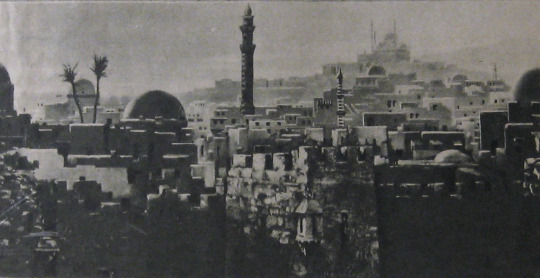
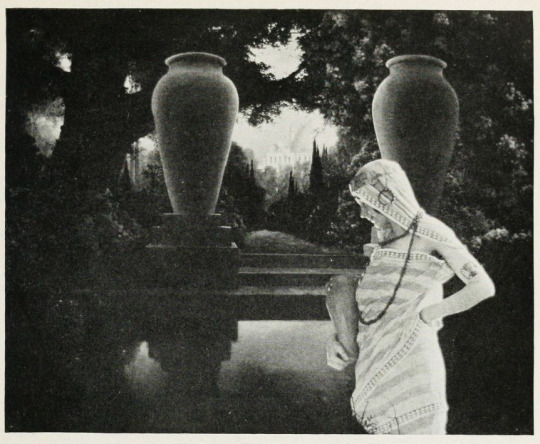
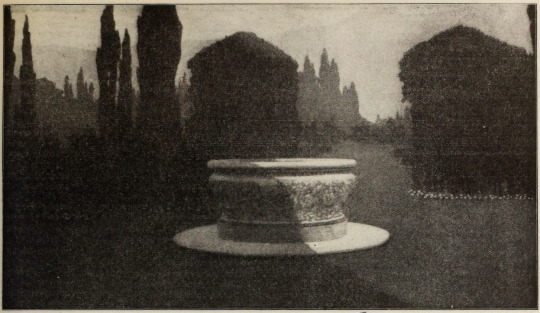
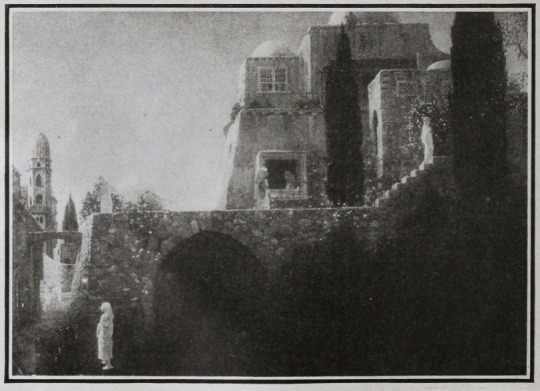
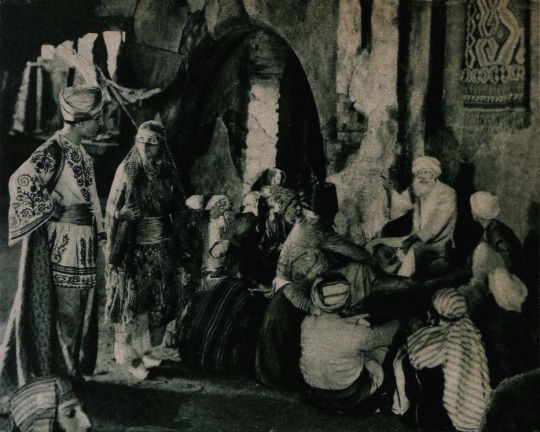
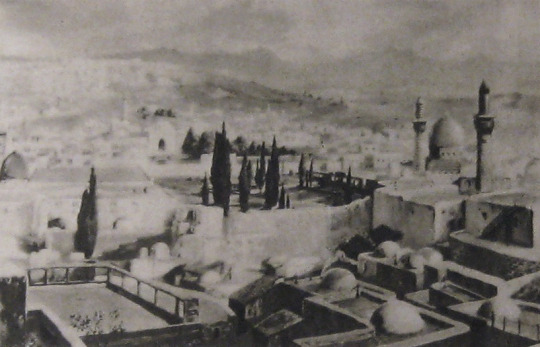

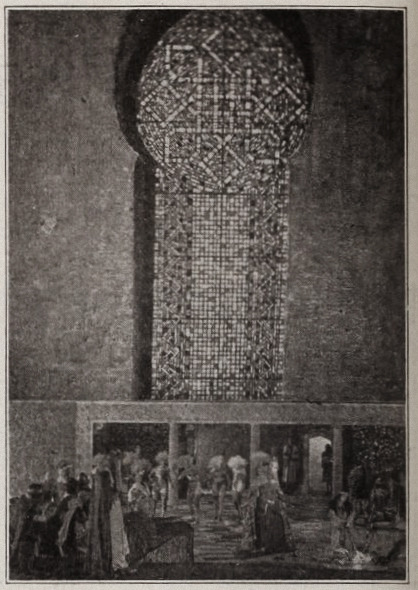
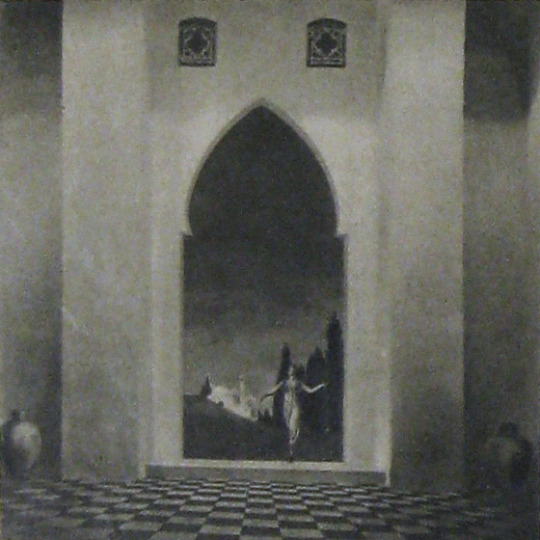


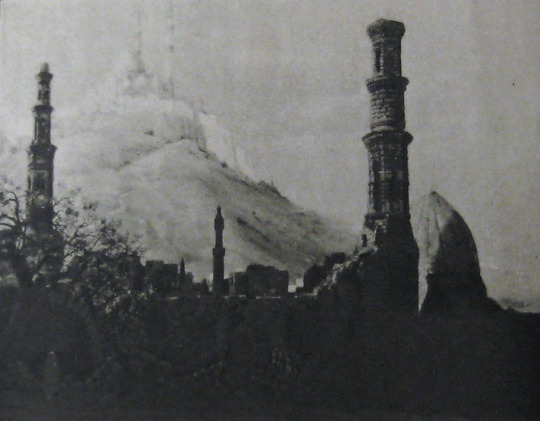
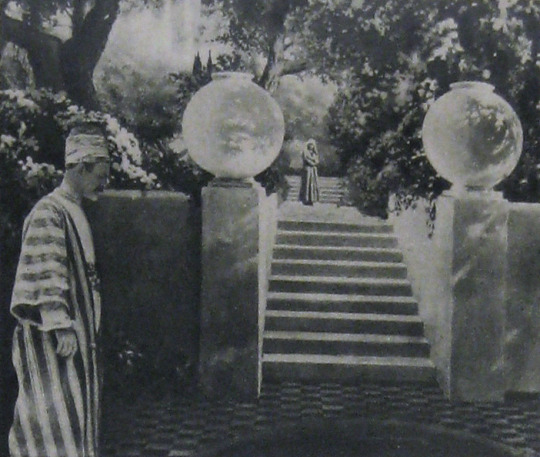
Alternate Titles: The Rubaiyat of Omar Khayyam, The Rubaiyat, Omar Khayyam, Omar
Direction: Ferdinand Pinney Earle; assisted by Walter Mayo
Scenario: Ferdinand P. Earle
Titles: Marion Ainslee, Ferdinand P. Earle (Omar), Louis Weadock (A Lover’s Oath)
Inspired by: The Rubaiyat of Omar Khayyam, as edited & translated by Edward FitzGerald
Production Manager: Winthrop Kelly
Camera: Georges Benoit
Still Photography: Edward S. Curtis
Special Photographic Effects: Ferdinand P. Earle, Gordon Bishop Pollock
Composer: Charles Wakefield Cadman
Editors: Arthur D. Ripley (The Rubaiyat of Omar Khayyam version), Ethel Davey & Ferdinand P. Earle (Omar / Omar Khayyam, the Director’s cut of 1922), Milton Sills (A Lover’s Oath)
Scenic Artists: Frank E. Berier, Xavier Muchado, Anthony Vecchio, Paul Detlefsen, Flora Smith, Jean Little Cyr, Robert Sterner, Ralph Willis
Character Designer: Louis Hels
Choreography: Ramon Novarro (credited as Ramon Samaniegos)
Technical Advisors: Prince Raphael Emmanuel, Reverend Allan Moore, Captain Dudley S. Corlette, & Captain Montlock or Mortlock
Studio: Ferdinand P. Earle Productions / The Rubaiyat, Inc. (Production) & Eastern Film Corporation (Distribution, Omar), Astor Distribution Corporation [States Rights market] (Distribution, A Lover’s Oath)
Performers: Frederick Warde, Edwin Stevens, Hedwiga Reicher, Mariska Aldrich, Paul Weigel, Robert Anderson, Arthur Carewe, Jesse Weldon, Snitz Edwards, Warren Rogers, Ramon Novarro (originally credited as Ramon Samaniegos), Big Jim Marcus, Kathleen Key, Charles A. Post, Phillippe de Lacy, Ferdinand Pinney Earle
Premiere(s): Omar cut: April 1922 The Ambassador Theatre, New York, NY (Preview Screening), 12 October 1923, Loew’s New York, New York, NY (Preview Screening), 2 February 1923, Hoyt’s Theatre, Sydney, Australia (Initial Release)
Status: Presumed lost, save for one 30 second fragment preserved by the Academy Film Archive, and a 2.5 minute fragment preserved by a private collector (Old Films & Stuff)
Length: Omar Khayyam: 8 reels , 76 minutes; A Lover’s Oath: 6 reels, 5,845 feet (though once listed with a runtime of 76 minutes, which doesn’t line up with the stated length of this cut)
Synopsis (synthesized from magazine summaries of the plot):
Omar Khayyam:
Set in 12th century Persia, the story begins with a preface in the youth of Omar Khayyam (Warde). Omar and his friends, Nizam (Weigel) and Hassan (Stevens), make a pact that whichever one of them becomes a success in life first will help out the others. In adulthood, Nizam has become a potentate and has given Omar a position so that he may continue his studies in mathematics and astronomy. Hassan, however, has grown into quite the villain. When he is expelled from the kingdom, he plots to kidnap Shireen (Key), the sheik’s daughter. Shireen is in love with Ali (Novarro). In the end it’s Hassan’s wife (Reicher) who slays the villain then kills herself.
A Lover’s Oath:
The daughter of a sheik, Shireen (Key), is in love with Ali (Novarro), the son of the ruler of a neighboring kingdom. Hassan covets Shireen and plots to kidnap her. Hassan is foiled by his wife. [The Sills’ edit places Ali and Shireen as protagonists, but there was little to no re-shooting done (absolutely none with Key or Novarro). So, most critics note how odd it is that all Ali does in the film is pitch woo, and does not save Shireen himself. This obviously wouldn’t have been an issue in the earlier cut, where Ali is a supporting character, often not even named in summaries and news items. Additional note: Post’s credit changes from “Vizier” to “Commander of the Faithful”]
Additional sequence(s) featured in the film (but I’m not sure where they fit in the continuity):
Celestial sequences featuring stars and planets moving through the cosmos
Angels spinning in a cyclone up to the heavens
A Potters’ shop sequence (relevant to a specific section of the poems)
Harem dance sequence choreographed by Novarro
Locations: palace gardens, street and marketplace scenes, ancient ruins


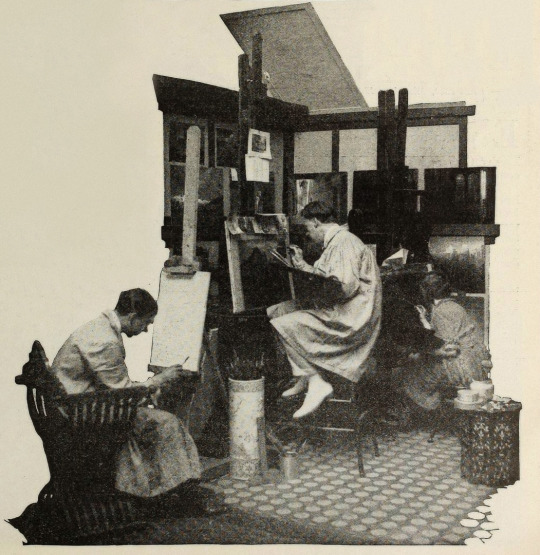


Points of Interest:
“The screen has been described as the last word in realism, but why confine it there? It can also be the last word in imaginative expression.”
Ferdinand P. Earle as quoted in Exhibitors Trade Review, 4 March 1922
The Rubaiyat of Omar Khayyam was a massive best seller. Ferdinand Pinney Earle was a classically trained artist who studied under William-Adolphe Bougueraeu and James McNeill Whistler in his youth. He also had years of experience creating art backgrounds, matte paintings, and art titles for films. Charles Wakefield Cadman was an accomplished composer of songs, operas, and operettas. Georges Benoit and Gordon Pollock were experienced photographic technicians. Edward S. Curtis was a widely renowned still photographer. Ramon Novarro was a name nobody knew yet—but they would soon enough.
When Earle chose The Rubaiyat as the source material for his directorial debut and collected such skilled collaborators, it seemed likely that the resulting film would be a landmark in the art of American cinema. Quite a few people who saw Earle’s Rubaiyat truly thought it would be:
William E. Wing writing for Camera, 9 September 1922, wrote:
“Mr. Earle…came from the world of brush and canvass, to spread his art upon the greater screen. He created a new Rubaiyat with such spiritual colors, that they swayed.”
…
“It has been my fortune to see some of the most wonderful sets that this Old Earth possesses, but I may truly say that none seized me more suddenly, or broke with greater, sudden inspiration upon the view and the brain, than some of Ferdinand Earle’s backgrounds, in his Rubaiyat.
“His vision and inspired art seem to promise something bigger and better for the future screen.”
As quoted in an ad in Film Year Book, 1923:
“Ferdinand Earle has set a new standard of production to live up to.”
Rex Ingram
“Fifty years ahead of the time.”
Marshall Neilan
The film was also listed among Fritz Lang’s Siegfried, Chaplin’s Gold Rush, Fairbanks’ Don Q, Lon Chaney’s Phantom of the Opera and The Unholy Three, and Erich Von Stroheim’s Merry Widow by the National Board of Review as an exceptional film of 1925.
So why don’t we all know about this film? (Spoiler: it’s not just because it’s lost!)
The short answer is that multiple dubious legal challenges arose that prevented Omar’s general release in the US. The long answer follows BELOW THE JUMP!
Earle began the project in earnest in 1919. Committing The Rubaiyat to film was an ambitious undertaking for a first-time director and Earle was striking out at a time when the American film industry was developing an inferiority complex about the level of artistry in their creative output. Earle was one of a number of artists in the film colony who were going independent of the emergent studio system for greater protections of their creative freedoms.
In their adaptation of The Rubaiyat of Omar Khayyam, Earle and Co. hoped to develop new and perfect existing techniques for incorporating live-action performers with paintings and expand the idea of what could be accomplished with photographic effects in filmmaking. The Rubaiyat was an inspired choice. It’s not a narrative, but a collection of poetry. This gave Earle the opportunity to intersperse fantastical, poetic sequences throughout a story set in the lifetime of Omar Khayyam, the credited writer of the poems. In addition to the fantastic, Earle’s team would recreate 12th century Persia for the screen.
Earle was convinced that if his methods were perfected, it wouldn’t matter when or where a scene was set, it would not just be possible but practical to put on film. For The Rubaiyat, the majority of shooting was done against black velvet and various matte photography and multiple exposure techniques were employed to bring a setting 800+ years in the past and 1000s of miles removed to life before a camera in a cottage in Los Angeles.
Note: If you’d like to learn a bit more about how these effects were executed at the time, see the first installment of How’d They Do That.
Unfortunately, the few surviving minutes don’t feature much of this special photography, but what does survive looks exquisite:

see all gifs here
Earle, knowing that traditional stills could not be taken while filming, brought in Edward S. Curtis. Curtis developed techniques in still photography to replicate the look of the photographic effects used for the film. So, even though the film hasn’t survived, we have some pretty great looking representations of some of the 1000s of missing feet of the film.
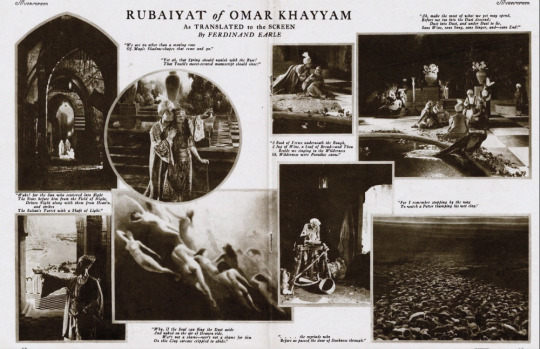
Nearly a year before Curtis joined the crew, Earle began collaboration with composer Charles Wakefield Cadman. In another bold creative move, Cadman and Earle worked closely before principal photography began so that the score could inform the construction and rhythm of the film and vice versa.
By the end of 1921 the film was complete. After roughly 9 months and the creation of over 500 paintings, The Rubaiyat was almost ready to meet its public. However, the investors in The Rubaiyat, Inc., the corporation formed by Earle to produce the film, objected to the ample reference to wine drinking (a comical objection if you’ve read the poems) and wanted the roles of the young lovers (played by as yet unknown Ramon Novarro and Kathleen Key) to be expanded. The dispute with Earle became so heated that the financiers absconded with the bulk of the film to New York. Earle filed suit against them in December to prevent them from screening their butchered and incomplete cut. Cadman supported Earle by withholding the use of his score for the film.
Later, Eastern Film Corp. brokered a settlement between the two parties, where Earle would get final cut of the film and Eastern would handle its release. Earle and Eastern agreed to change the title from The Rubaiyat of Omar Khayyam to simply Omar. Omar had its first official preview in New York City. It was tentatively announced that the film would have a wide release in the autumn.
However, before that autumn, director Norman Dawn launched a dubious patent-infringement suit against Earle and others. Dawn claimed that he owned the sole right to use multiple exposures, glass painting for single exposure, and other techniques that involved combining live action with paintings. All the cited techniques had been widespread in the film industry for a decade already and eventually and expectedly Dawn lost the suit. Despite Earle’s victory, the suit effectively put the kibosh on Omar’s release in the US.
Earle moved on to other projects that didn’t come to fruition, like a Theda Bara film and a frankly amazing sounding collaboration with Cadman to craft a silent-film opera of Faust. Omar did finally get a release, albeit only in Australia. Australian news outlets praised the film as highly as those few lucky attendees of the American preview screenings did. The narrative was described as not especially original, but that it was good enough in view of the film’s artistry and its imaginative “visual phenomena” and the precision of its technical achievement.
One reviewer for The Register, Adelaide, SA, wrote:
“It seems almost an impossibility to make a connected story out of the short verse of the Persian of old, yet the producer of this classic of the screen… has succeeded in providing an entertainment that would scarcely have been considered possible. From first to last the story grips with its very dramatic intensity.”
While Omar’s American release was still in limbo, “Ramon Samaniegos” made a huge impression in Rex Ingram’s Prisoner of Zenda (1922, extant) and Scaramouche (1923, extant) and took on a new name: Ramon Novarro. Excitement was mounting for Novarro’s next big role as the lead in the epic Ben-Hur (1925, extant) and the Omar project was re-vivified.

A new company, Astor Distribution Corp., was formed and purchased the distribution rights to Omar. Astor hired actor (note, not an editor) Milton Sills to re-cut the film to make Novarro and Key more prominent. The company also re-wrote the intertitles, reduced the films runtime by more than ten minutes, and renamed the film A Lover’s Oath. Earle had moved on by this point, vowing to never direct again. In fact, Earle was indirectly working with Novarro and Key again at the time, as an art director on Ben-Hur!
Despite Omar’s seemingly auspicious start in 1920, it was only released in the US on the states rights market as a cash-in on the success of one of its actors in a re-cut form five years later.
That said, A Lover’s Oath still received some good reviews from those who did manage to see it. Most of the negative criticism went to the story, intertitles, and Sills’ editing.
What kind of legacy could/should Omar have had? I’m obviously limited in my speculation by the fact that the film is lost, but there are a few key facts about the film’s production, release, and timing to consider.
The production budget was stated to be $174,735. That is equivalent to $3,246,994.83 in 2024 dollars. That is a lot of money, but since the production was years long and Omar was a period film set in a remote locale and features fantastical special effects sequences, it’s a modest budget. For contemporary perspective, Robin Hood (1922, extant) cost just under a million dollars to produce and Thief of Bagdad (1924, extant) cost over a million. For a film similarly steeped in spectacle to have nearly 1/10th of the budget is really very noteworthy. And, perhaps if the film had ever had a proper release in the US—in Earle’s intended form (that is to say, not the Sills cut)—Omar may have made as big of a splash as other epics.
It’s worth noting here however that there are a number of instances in contemporary trade and fan magazines where journalists off-handedly make this filmmaking experiment about undermining union workers. Essentially implying that that value of Earle’s method would be to continue production when unionized workers were striking. I’m sure that that would absolutely be a primary thought for studio heads, but it certainly wasn’t Earle’s motivation. Often when Earle talks about the method, he focuses on being able to film things that were previously impossible or impracticable to film. Driving down filming costs from Earle’s perspective was more about highlighting the artistry of his own specialty in lieu of other, more demanding and time-consuming approaches, like location shooting.
This divide between artists and studio decision makers is still at issue in the American film and television industry. Studio heads with billion dollar salaries constantly try to subvert unions of skilled professionals by pursuing (as yet) non-unionized labor. The technical developments of the past century have made Earle’s approach easier to implement. However, just because you don’t have to do quite as much math, or time an actor’s movements to a metronome, does not mean that filming a combination of painted/animated and live-action elements does not involve skilled labor.
VFX artists and animators are underappreciated and underpaid. In every new movie or TV show you watch there’s scads of VFX work done even in films/shows that have mundane, realistic settings. So, if you love a film or TV show, take the effort to appreciate the work of the humans who made it, even if their work was so good you didn’t notice it was done. And, if you’ve somehow read this far, and are so out of the loop about modern filmmaking, Disney’s “live-action” remakes are animated films, but they’ve just finagled ways to circumvent unions and low-key delegitimize the skilled labor of VFX artists and animators in the eyes of the viewing public. Don’t fall for it.
VFX workers in North America have a union under IATSE, but it’s still developing as a union and Marvel & Disney workers only voted to unionize in the autumn of 2023. The Animation Guild (TAG), also under the IATSE umbrella, has a longer history, but it’s been growing rapidly in the past year. A strike might be upcoming this year for TAG, so keep an eye out and remember to support striking workers and don’t cross picket lines, be they physical or digital!
Speaking of artistry over cost-cutting, I began this post with a mention that in the early 1920s, the American film industry was developing an inferiority complex in regard to its own artistry. This was in comparison to the European industries, Germany’s being the largest at the time. It’s frustrating to look back at this period and see acceptance of the opinion that American filmmakers weren’t bringing art to film. While yes, the emergent studio system was highly capitalistic and commercial, that does not mean the American industry was devoid of home-grown artists.
United Artists was formed in 1919 by Douglas Fairbanks, Charlie Chaplin, Mary Pickford, and D.W. Griffith precisely because studios were holding them back from investing in their art—within the same year that Earle began his Omar project. While salaries and unforgiving production schedules were also paramount concerns in the filmmakers going independent, a primary impetus was that production/distribution heads exhibited too much control over what the artists were trying to create.
Fairbanks was quickly expanding his repertoire in a more classical and fantastic direction. Cecil B. DeMille made his first in a long and very successful string of ancient epics. And the foreign-born children of the American film industry, Charlie Chaplin, Rex Ingram, and Nazimova, were poppin’ off! Chaplin was redefining comedic filmmaking. Ingram was redefining epics. Nazimova independently produced what is often regarded as America’s first art film, Salome (1923, extant), a film designed by Natacha Rambova, who was *gasp* American. Earle and his brother, William, had ambitious artistic visions of what could be done in the American industry and they also had to self-produce to get their work done.
Meanwhile, studio heads, instead of investing in the artists they already had contracts with, tried to poach talent from Europe with mixed success (in this period, see: Ernst Lubitsch, F.W. Murnau, Benjamin Christensen, Mauritz Stiller, Victor Sjöström, and so on). I’m in no way saying it was the wrong call to sign these artists, but all of these filmmakers, even if they found success in America, had stories of being hired to inject the style and artistry that they developed in Europe into American cinema, and then had their plans shot down or cut down to a shadow of their creative vision. Even Stiller, who tragically died before he had the opportunity to establish himself in the US, faced this on his first American film, The Temptress (1926, extant), on which he was replaced. Essentially, the studio heads’ actions were all hot air and spite for the filmmakers who’d gone independent.

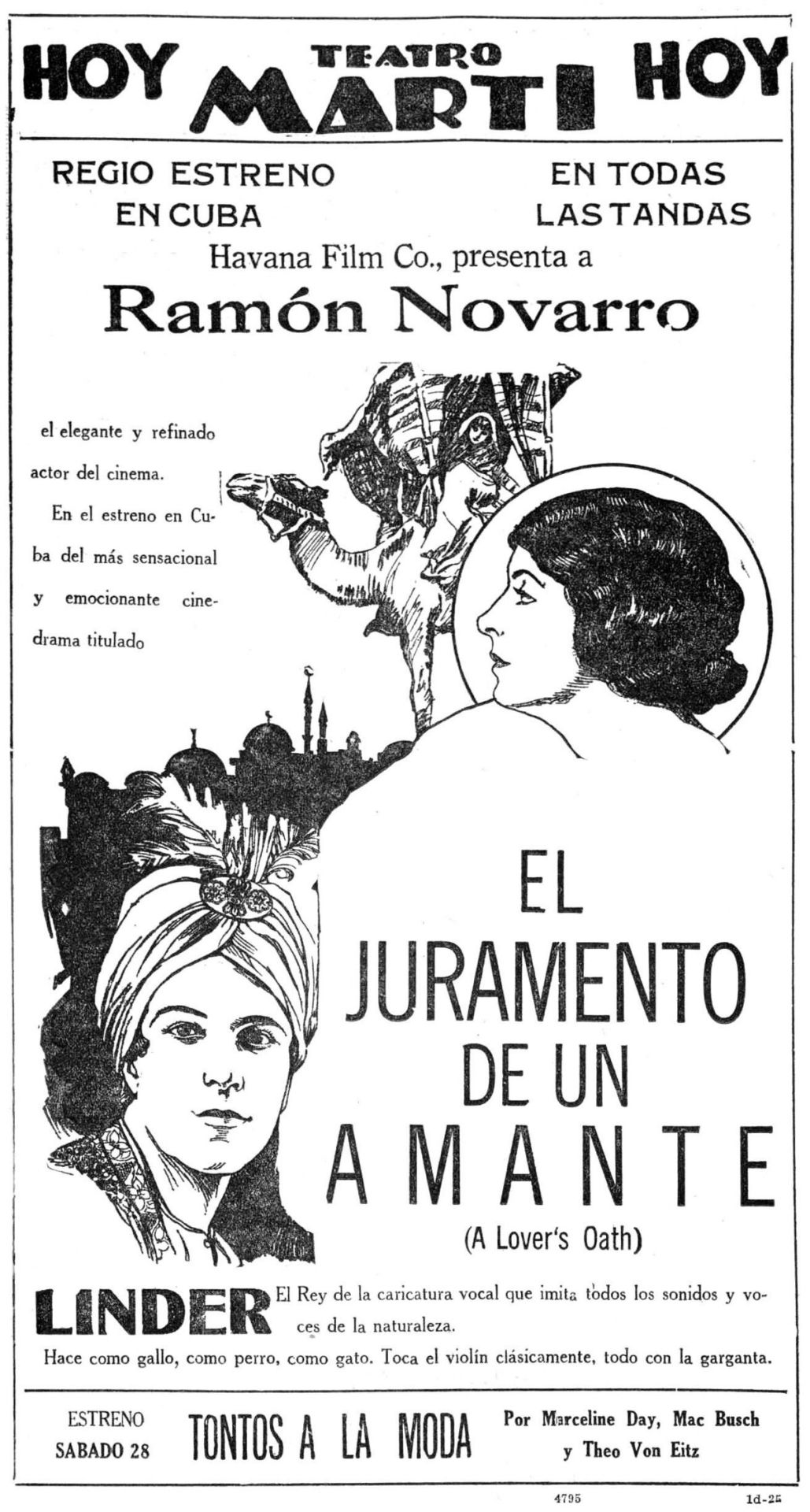
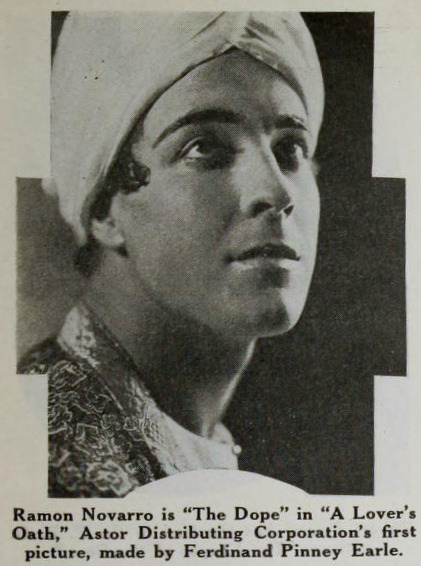
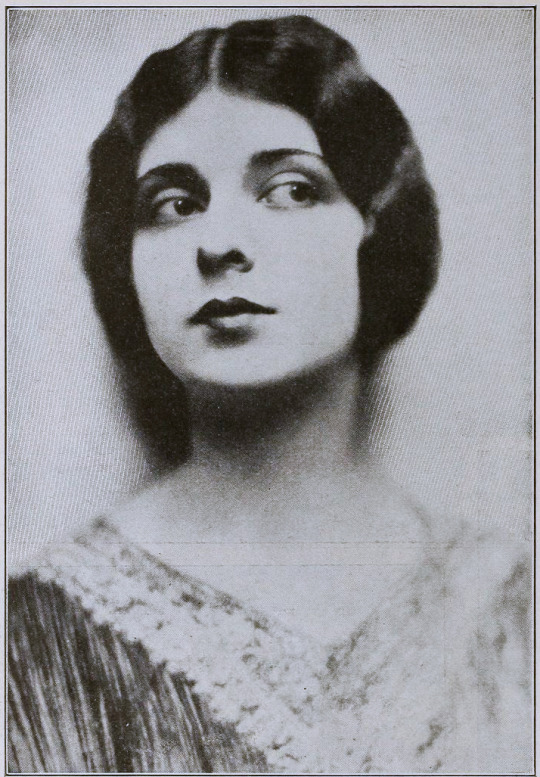
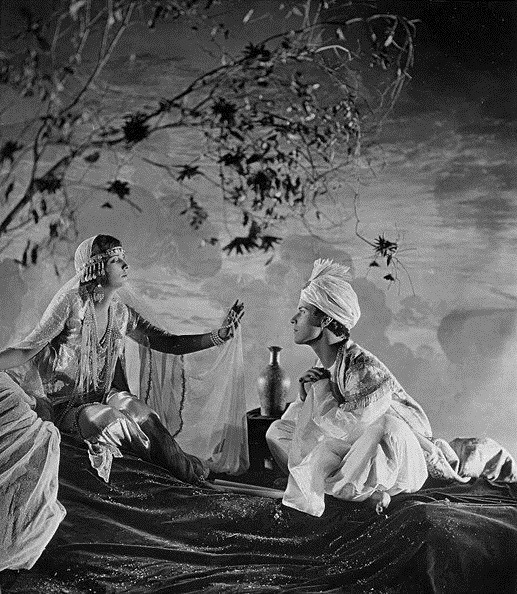
Finally I would like to highlight Ferdinand Earle’s statement to the industry, which he penned for from Camera in 14 January 1922, when his financial backers kidnapped his film to re-edit it on their terms:
MAGNA CHARTA
Until screen authors and producers obtain a charter specifying and guaranteeing their privileges and rights, the great slaughter of unprotected motion picture dramas will go merrily on.
Some of us who are half artists and half fighters and who are ready to expend ninety per cent of our energy in order to win the freedom to devote the remaining ten per cent to creative work on the screen, manage to bring to birth a piteous, half-starved art progeny.
The creative artist today labors without the stimulus of a public eager for his product, labors without the artistic momentum that fires the artist’s imagination and spurs his efforts as in any great art era.
Nowadays the taint of commercialism infects the seven arts, and the art pioneer meets with constant petty worries and handicaps.
Only once in a blue moon, in this matter-of-fact, dollar-wise age can the believer in better pictures hope to participate in a truely [sic] artistic treat.
In the seven years I have devoted to the screen, I have witnessed many splendid photodramas ruined by intruding upstarts and stubborn imbeciles. And I determined not to launch the production of my Opus No. 1 until I had adequately protected myself against all the usual evils of the way, especially as I was to make an entirely new type of picture.
In order that my film verison [sic] of the Rubaiyat of Omar Khayyam might be produced under ideal conditions and safeguarded from intolerable interferences and outside worries, I entered into a contract with the Rubaiyat, Inc., that made me not only president of the corporation and on the board of directors, but which set forth that I was to be author, production manager, director, cutter and film editor as well as art director, and that no charge could be made against the production without my written consent, and that my word was to be final on all matters of production. The late George Loane Tucker helped my attorney word the contract, which read like a splendid document.
Alas, I am now told that only by keeping title to a production until it is declared by yourself to be completed is it safe for a scenario writer, an actor or a director, who is supposedly making his own productions, to contract with a corporation; otherwise he is merely the servant of that corporation, subject at any moment to discharge, with the dubious redress of a suit for damages that can with difficulty be estimated and proven.
Can there be any hope of better pictures as long as contracts and copyrights are no protection against financial brigands and bullies?
We have scarcely emerged from barbarism, for contracts, solemnly drawn up between human beings, in which the purposes are set forth in the King’s plainest English, serve only as hurdles over which justice-mocking financiers and their nimble attorneys travel with impunity, riding rough shod over the author or artist who cannot support a legal army to defend his rights. The phrase is passed about that no contract is invioliable [sic]—and yet we think we have reached a state of civilization!
The suit begun by my attorneys in the federal courts to prevent the present hashed and incomplete version of my story from being released and exhibited, may be of interest to screen writers. For the whole struggle revolves not in the slightest degree around the sanctity of the contract, but centers around the federal copyright of my story which I never transferred in writing otherwise, and which is being brazenly ignored.
Imagine my production without pictorial titles: and imagine “The Rubaiyat” with a spoken title as follows, “That bird is getting to talk too much!”—beside some of the immortal quatrains of Fitzgerald!
One weapon, fortunately, remains for the militant art creator, when all is gone save his dignity and his sense of humor; and that is the rapier blade of ridicule, that can send lumbering to his retreat the most brutal and elephant-hided lord of finance.
How edifying—the tableau of the man of millions playing legal pranks upon men such as Charles Wakefield Cadman, Edward S. Curtis and myself and others who were associated in the bloody venture of picturizing the Rubaiyat! It has been gratifying to find the press of the whole country ready to champion the artist’s cause.
When the artist forges his plowshare into a sword, so to speak, he does not always put up a mean fight.
What publisher would dare to rewrite a sonnet of John Keats or alter one chord of a Chopin ballade?
Creative art of a high order will become possible on the screen only when the rights of established, independent screen producers, such as Rex Ingram and Maurice Tourneur, are no longer interferred with and their work no longer mutilated or changed or added to by vandal hands. And art dramas, conceived and executed by masters of screen craft, cannot be turned out like sausages made by factory hands. A flavor of individuality and distinction of style cannot be preserved in machine-made melodramas—a drama that is passed from hand to hand and concocted by patchworkers and tinkerers.
A thousand times no! For it will always be cousin to the sausage, and be like all other—sausages.
The scenes of a master’s drama may have a subtle pictorial continuity and a power of suggestion quite like a melody that is lost when just one note is changed. And the public is the only test of what is eternally true or false. What right have two or three people to deprive millions of art lovers of enjoying an artist’s creation as it emerged from his workshop?
“The Rubaiyat” was my first picture and produced in spite of continual and infernal interferences. It has taught me several sad lessons, which I have endeavored in the above paragraphs to pass on to some of my fellow sufferers. It is the hope that I am fighting, to a certain extent, their battle that has given me the courage to continue, and that has prompted me to write this article. May such hubbubs eventually teach or inforce a decent regard for the rights of authors and directors and tend to make the existence of screen artisans more secure and soothing to the nerves.
FERDINAND EARLE.
---
☕Appreciate my work? Buy me a coffee! ☕
Transcribed Sources & Annotations over on the WMM Blog!
See the Timeline for Ferdinand P. Earle's Rubaiyat Adaptation
#1920s#1923#1925#omar khayyam#ferdinand pinney earle#ramon novarro#independent film#american film#silent cinema#silent era#silent film#classic cinema#classic movies#classic film#film history#history#Charles Wakefield Cadman#cinematography#The Rubaiyat#cinema#film#lost film
49 notes
·
View notes
Text
For anyone curious about the Chelsea Hotel, I found this article by Vanity Fair that describes the hotel in the words of it's tenants.
The article is 11 years old - the renovations described have since been finished and the Chelsea has been reopened as a luxury hotel - but very interesting.
(Content warning for mentions of murder, suicide, sexual assault, assault, outdated language, and drug use)
17 notes
·
View notes
Text










"Well, I've done some riding in my time, you know." "Oh?" "Junior Silver Spurs, Brockbrook, 1910."
Murder at the Gallop, 1963.
Dir. George Pollock | Writ. James P. Cavanagh | DOP Arthur Ibbetson
#murder at the gallop#british film#1960s#miss marple#agatha christie#margaret rutherford#crime thriller#murder mystery#10 frames
39 notes
·
View notes
Text
Emeline Grier Miller, Kimber Hibbs, Adrianna Hutto, Jayden-Jay Silvester, Emily Vitoria Tavares DaSilva, Mystique Genuine Pairama, Josie Burleson, Faithlynn Blankenship, Leena Arredondo, Sally Ann Chesebro, Paige Marie Nilson, Christine L.Ketchum, Andrea Lee Anna Castilla, Shirley Temple and baby Leroy, Ava Jordan Wood, Samantha and Tessara Crespi, Gabby Petito, Mei Leung, Dayle Okazaki, Joan of Arc, Mary Katherine Moore, Arthur Boyd Moore, Brianna Mariah Lopez, Saffie-Rose Brenda Roussos, Lily Peters, Olivia Pratt Korbel, Elizabeth Shelley, Sara Sharif, Charlotte Figi, Lucy Morgan, Star Hobson, Emilie Alice Parker, Catherine Violet Hubbard, Princess Sophie Hélène Béatrice, Louis XVII, Lois Janes, Sharon Lee Gallegos, Maite Rodriguez, Eliahna Torres, Jackie Cazares, Makenna Lee Elrod, Jayce Carmelo Luevanos, Jailah Nicole Silguero, Maranda Gail Mathis, Caroline Previdi, Charlotte Bacon, Olivia Engel, Olivia Dahl, Laila Marie Daniel, Paulette Gebara Farah, Barbara Tinning, Baby Abby Jennings, Olivia-Leigh Picton, Aisha and Lailani Ford, Caroline and Madison Rae king, Gillian and Jennifer Pollock, Madison Weeks, Violet Beckett, Kasi Sanders, Heather O'Rourke and Judith Barsi, Heather White, Jaclyn Dowaliby, Betty Jean Bartlett, Brianna Lynn Walker, Judy Garland, Darla Jean Hood, Frank Sutton, Jim Nabors, Eva Heyman, Lily Elsie, Nannie Tyler, Dicy Loud Ream, Emma Ochsner, Emma Ochsner Mundhenke, Little Darcy-May Elm, Mia Julianne Nicole Serrato, Sarah Shulze, Veronica Moser-Sullivan, Moa Leontine Björk, Princess Elisabeth of Hesse and by Rhine, Rika Oudgenoeg, Makenna Grace Adcock, MaKenna Rae Fraaza, Mariah Lynn Sisco, Lesley Ann Downey, Sienna Maloney, Avery Nicole King, Angel Hope Herrera, Gerb Johansson, Th Princess Louise and Queen Victoria, Megan Rochelle Jenkins, Jennifer Sue Delgado, Soren Chilson, Joanna Pollock, Jacqueline Theresa Pollock, Robert Towne, Leona Gertrude Loud, Sirita Jimmina “BooBoo” Sotelo, Lee Williams rest in peace
2 notes
·
View notes
Text
Yankee doodles.
Happy New year @erismor-iok ! I was your secret santa for the rusame exchange 2022. I chose your historical prompt and went a bit overboard with the cold war antics. I hope you like it!
London, 1964.
High ceilings, white walls and minuscule frames made sure to enhance the artworks' presence on the exhibition, vibrant colors and intricate forms guiding the eyes through a journey of styles, techniques, but above all, artistic freedom. A smile made its way into Alfred's face, months, even years of work allowed him, as well as everyone present, to marvel at the creations of an ambitious generation of artists.
He had wandered away from Arthur, or perhaps it had been the other way around, the Englishman seemed to be postponing the well deserved praise for his efforts, a bit of cooperation could go a long way with the right amount of resources and the right justification for such an investment.
Alfred's eyes narrow as he caughts sight of a familiar tall figure, it's impossible not to notice him, though the rest of the public seems dazed with the artworks.
With long quick strides he approaches, until they're standing side by side, a Pollock's painting right before them. Alfred whispers as if that could offer them the slightest privacy in a place like this. "What are you doing here?"
Alfred holds his stare into the painting but he can imagine, he can hear that growing smile, Ivan's voice is just as soft as usual, even that tiny pitch of irony is there. "Isn't that what you wanted, for me to see how much cultural powerness you have?"
He can't help but smile, the same arrogant bright smile that Russia hates but Ivan likes. A small shrug and he answers. "Not everything is about me or you, this time, it's about Arthur, I'm not here to take the credit away from him."
There's a pause, Alfred tries to focus on the painting, on the vigorous strokes and the imposing colors but his heart is hammering on his chest out of anticipation. The counterattack comes swiftly, too soft for his own liking. "You've been busy with these events, Rome, Paris, though I heard the latter was rather disastrous, France can be ruthless with the critics, can't he?"
It's too easy, Ivan must know the answer but Alfred obligues by replying just as the members of the congress for cultural freedom have done for the last years. "You know how prideful they can be. Europe's economy is blossoming once again and it's only natural to revitalize the cultural scene."
"They said it looked superfluous. It's big, it's boisterous, electrifying," Ivan chuckles, motioning with his hand towards the painting, "Perhaps… too American for their liking. I admit, there's a certain merit to what you've achieved here but it's rather obvious for me, and probably for France, that you wanted to deliver a message with this."
Ah, there it is, the strike towards his ego, Alfred can feel his blood boiling, his body tensing and his voice becomes dainty, taunting the bear that sleeps inside the other. "You talk as if I had done this alone, as if Arthur would let me push him around as you do with your…friends. I am not the one with state sponsored art."
A chuckle escapes from Ivan. "Abstract expressionism prides itself in being apolitical, in enhancing the artists' freedom of action as if those statements didn't align with certain american values. That's why France is reluctant to follow up. Rejecting tradition, breaking the past structures, it all sounds so promising to young artists that are receiving your funding, but it's certainly hard to hide the way the concept of freedom has taken a political stance."
The statement leaves Alfred speechless, he didn't expect Ivan to speak so bluntly about it, he ponders on a counterargument, on a way to deny ulterior motives, but this is not the place or the time for a political debate, so he bites his tongue and lets out a laugh, neither accepting nor denying what he's been told.
Ivan seems to understand, joining him on that small laugh as the tension in the air dissipates. His heavy hand rests on Alfred's shoulder. "This exhibition is… refreshing, Arthur should be proud."
You should be proud. It's what Alfred wants to believe he meant. No matter how close they get to each other, the truth has to come in layers, veiled with empty compliments or bitterness.
The rest of the exhibit is a blur to Alfred, he's simply walking around, listening to the intricate words that come out of Ivan's mouth. Sophistication, refinement, those are the words used by the intelligence reports to describe the soviets and their cultural program, and Alfred can tell more or less the reason behind it.
It's not that he can't manage to act like that, it's that he refuses to fall in the same snobbish play. He knows that's a game he cannot win, not against Arthur, and even less so against Ivan. Plus it would be contradictory, to vouch for change while abiding to the old world's antics.
A slight tap on his arm and he's taken out of his thoughts, Ivan's face is curious as if wanting to pry the words away from his mind. The Russian leans closer and Alfred holds his breath. "You can tell me if I'm boring you,"
Alfred shakes his head, his hand resting on the red sculpture before them, a not so careless act even when he knows he shouldn't touch it. The steel is cold, it grounds him, reminds him that there's more more in this world than just the warmth of Ivan's hand resting on his shoulder.
Before he can retrieve his hand, there's a pause, a phantom touch on the base of his neck that makes him shiver. "You are awfully physical today,"
"Perhaps I'm trying to infect your pristine morals with my devious red claws."
Alfred chuckles, moving away from the sculpture and heading out. The cold air bites on his skin and he shivers, they stand beside each other, separated by a pillar, a godforsaken roman column, allowing themselves to be close, but not so much in case someone is watching.
Clothes rustle as the Russian fishes in his coat for a flask, taking a swig and offering him to drink. Ivan's features are probably carved out of the finest marble, he can't detect a single sign of malice or playfulness, nothing, and that's what sets all kinds of alarms in Alfred's head.
He extends his hand, their fingers touching for a brief moment before the cold silver erases the feeling. He can feel Ivan's eyes following his every move, but he is not one to shy away, so he smiles, accepts the flask and drinks. Slowly, because the alcohol is bitter, it feels like it burns him inside but the taste is familiar, soothing, and so is the warmth that spreads on his body, on his cheeks, he chuckles as the Russian averts his gaze.
There's a certain satisfaction in melting his cold heart, too bad he can't brag about it, at least not publicly. "You're not getting any favors from me, I can't promote everyone and your name is on the top of my blacklist."
"Ironic, we're not so different then," Ivan says, as if the comment didn't poke into an open wound. "Do you think that if I paint something like that, it would have a chance to be displayed in New York?"
"Yes, I would hang it on my living room but isn't this considered superfluous and vain?" Alfred asks sincerely, he wouldn't mind owning a painting done by the other, he is not sure if the other has an artistic strike at all. "Wouldn't you rather paint life as it is instead of these yankee doodles?"
"Ah but where would be the fun in painting your suburban neighborhoods? I prefer to trace your defense maps and send them via museum as a threat, or perhaps I can try to paint Lenin's face on the window of your penthouse, would that be better?"
The scene is absurd enough to break his act, to send him into a fit of laughter, he leans on the column. "You'd have to get there first,"
"If I set my mind on it, I will,"
"One day I'll invite you there," There's a pause after that and Alfred fears that he's made a mistake but the Russian gives him a small smile, soothing his nerves.
"One day…" Ivan says, hiding his hands in his pockets. "Until then, I hope you enjoy the praise. You've earned it."
"I'll be waiting for your painting," Alfred says, though he gets no reply.
Coldness is creeping on his bones as he returns to the gallery, the exhibition is a success, and he hopes his breath doesn't reek of alcohol when he approaches Arthur again, though he doesn't mind the lingering taste on his mouth. One day… his mind echoes, but he doesn't dare to finish that train of thought.
Notes
This story is set during the temporary exhibition of the Tate Gallery: 'Painting and sculpture of a Decade 54-64'. The exhibition – that attracted a big audience and showed more than 350 artworks- meant a crucial point in the artistic world of Britain, with its claim for artistic and cultural funding and parallel to it, the request of establishing a Museum of Modern Arts in London (following the same line as in Paris or New York) and finally to revert the deficit of the public galleries on the city that by the end of the 1950s was impossible to hide.
The Congress for Cultural Freedom (CCF) was an anti-communist advocacy group founded in 1950. It was later revealed that the CIA was instrumental in the establishment and funding of the group. The Congress aimed to enlist intellectuals and opinion makers in a war of ideas against communism. It aimed to challenge the post-war sympathies with the USSR of many Western intellectuals, particularly among liberals and the non-Communist Left. That is not to say that the intellectuals (be it artists, writers, diplomats and so on) were explicitly in favor or aware of the CCF operations and goals. More than a direct course of action, the CCF took advantage of a tightly knit group of influence and unlimited funds to invest in several conferences, exhibits, newspapers and events in order to try and shape the public opinion towards a more sympathetic view of the United States influence on the cultural scene.
Western Europe's art scene wasn't exactly welcoming for the cultural agenda that the CCF with the help of institutions such as the Museum of modern arts of New York (MoMA) or sponsors such as the Rockefeller fund had in mind, some artists and critics argued about a subtle “Americanization” of art promoted by the American government, they saw this expansion as a cultural colonization, strengthened in artistic styles such as the abstract expressionism.
Abstract expressionism (as well as the artists inside that artistic movement) weren't explicitly opposing or rivaling the USSR, the social realism movement or the communist ideals. In fact, a great deal of artists were investigated and harassed by the public opinion for having "sympathy" with the leftist, socialist or communist political spectrum, which ironically ended up with a reticence inside the United States to display or promote abstract expressionism while continuously investing on artworks to "ship off" itinerant exhibits outside of the United States.
There were some unfounded accusations against the abstract expressionists for being "tools of the Kremlin" and for revealing the US defense maps or delivering secret messages through the paintings as well as for creating "decadent" artworks.
Also fun fact, when Ivan talks about painting Lenin on Alfred's penthouse it's meant as a sort of silly reference to the "Man at the Crossroads" fiasco in New York city's Rockefeller's center.
There's a lot of bibliography regarding the Cold war but for the specific topic of the "Cultural Cold War" and the operations of the CCF, Frances Stonor Saunders' book "The CIA and the cultural cold war" offers plenty of information as well as more bibliography about it.
There's also the work of Eva Cockcroft, 'Pollock and after, the critical debate. Abstract Expressionism a Weapon of the Cold War.' that speaks about the MoMA's agenda of promoting abstract impressionism and the funding of the Rockefeller family on it.
England's economic, cultural and political period in which the Tate Gallery's exhibit was built and displayed is thoroughly explained by Andrew Stephenson in Painting and Sculpture of a Decade ’54–’64 Revisited.
#rusame exchange#rusame#amerus#hws russia#aph russia#hws america#aph america#hetalia#ilich writes#hetalia fanfiction#historical hetalia
37 notes
·
View notes
Text
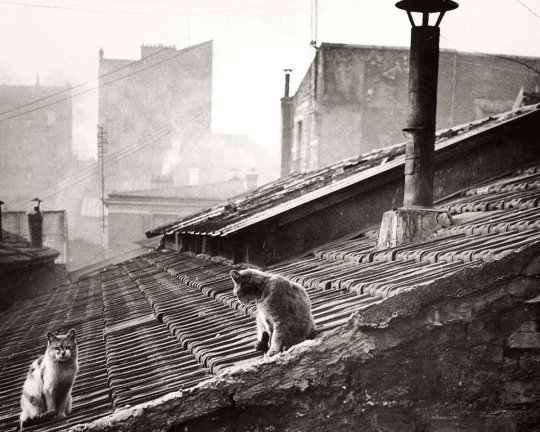


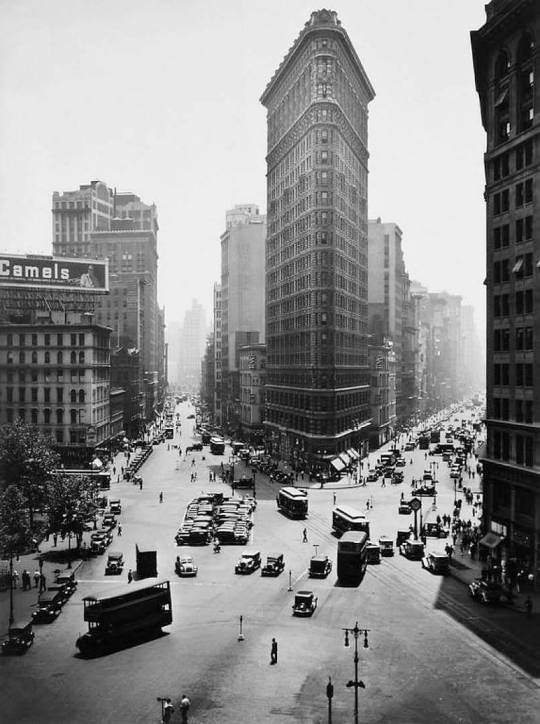

Top 10 2023. 2/2
1 - Edouard Boubat. Cats on a roof in Paris. 1947. 2 - Bill Varie/Los Angeles Times. Route 66. June 28, 1977. 3 - Arthur Pollock. A helicopter delivered a model dinosaur to the city’s Museum of Science (Boston). 1984. 4 - Berenice Abbott. The Flatiron Building, New York City, 1938. 5 - Unknown Photographer. Arc de Triomphe, Paris, 1935
390 notes
·
View notes
Text
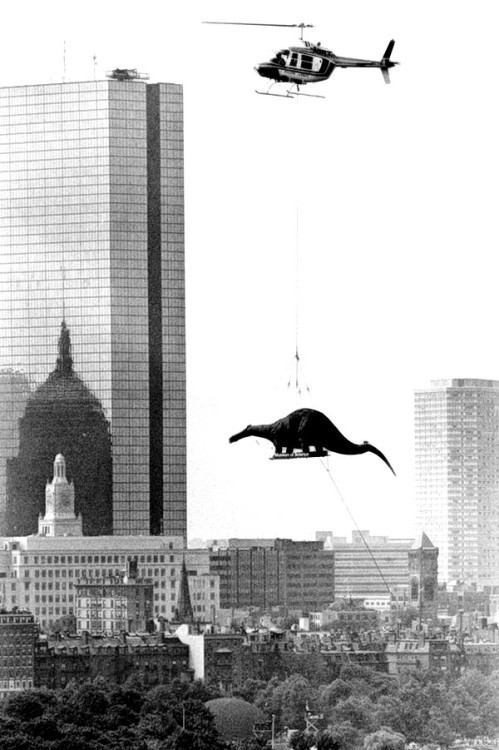
Arthur Pollock. Flying to the Museum of Science in Boston, 1984.
3 notes
·
View notes
Text
Visualising Time/Creative Recording Seminar - Paul Tarpey
Notes:
Time based art has the subject of time visualised in predetermined or spontaneius form
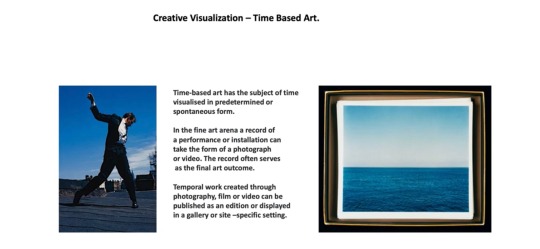
Research material can become an artwork in itself
Yves Klein - Leap Into the Void
Jackson Pollock - his energy was embodied in hid canvases

Lisa Ohlweiler - Performance art
Alex Prager - Seconds, 2021
“Where the artist puts something in focus, it directs the eye towards... and it and suggests what the artist wants to say”
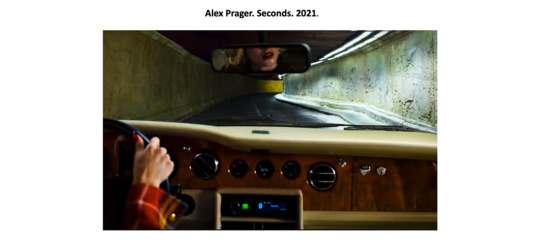
Vito Acconci - Following Piece
Maria Antelman - Photographic Sculpture
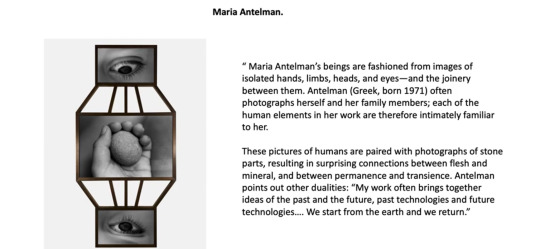
Boyd Webb - Exploring the physcial laws of representation in photography
Black and white is more graphic better for shadows, colour is better to showcase objects
Arthur Tress - Glass Box
Morten Lasskogen
Azuma - Defining time-based material
(flowers in ice)

youtube
2 notes
·
View notes
Text







A day in the life of an evil child 😈

bonus


Hope ordering Artie to clean and making sure he does it well 😤
#ts4 gameplay#ts4 challenge#ts4 legacy challenge#ts4 screenshots#daddy was like no tantrums in my house young lady#pollock legacy#hope pollock#pandora pollock#sterling atcliffe by rainymoodlet#arthur the butler#gen5
89 notes
·
View notes
Note
heyyy i'm visiting new york for the first time in a couple weeks and was wondering if you had any museum recommendations for a first timer? i'm up for anything but art museums would be great! ❤️❤️
Yes absolutely!! If it's your first time in the city these two are the must sees for art, imo:
The Met - ideal art museum for a first visit, it's got a huge & diverse collection! I'd recommend picking a few galleries to visit in advance because you can't do the whole thing in a day (unless you have a lot of energy and want to make that your day). If you're not sure what to go with, my favorites are the sculpture galleries (especially the European sculpture & the Rodins just outside the photography gallery), the Korean and Japanese art galleries, the Temple of Dendur, the costume institute...if the visual storage area is open, that's also very cool to see!
MoMA - obvious if you like modern art, it's also got some really amazing views if you care about that kind of thing. They've got all sorts of cool stuff going on but it's a great opportunity to see pieces by Pollock, Rothko, Agnes Martin, Hilma af Klimt, Picasso, and Van Gogh in person
Other great art museum options are:
The Frick Collection - its original home is still being renovated but the Madison Ave location is well worth visiting
The Rubin Museum of Art - amazing collection of Asian art
The Guggenheim - very cool building, but if you're looking for modern art, the MoMA has a better collection imo
The Whitney - will have expanded their free day options by the time you visit, has some great views of the city, and is conveniently located by the High Line
The Cloisters - it's a hike, but if you like religious art it's a must-see
The New York Earth Room - not really a museum but a single exhibit, I don't see people mentioning this one often though! It's a cool thing to see if you're in the area (and free!)
The Jewish Museum - cool collection of older and new art, free on Saturdays
If you want to go to the outer boroughs...
The Brooklyn Museum (Brooklyn) - absolutely incredible collection and always showing something cool!!
The New York Botanical Gardens (Bronx) - it's right by Arthur Ave too, which has some of the best Italian food you can get in the city
Museum of the Moving Image (Queens)
Noguchi Museum (Queens)
Other non-art museums:
Museum of Natural History - self explanatory, crowded but cool to see! Awesome planetarium too, if you're into that kind of thing.
National Museum of the American Indian - haven't been myself yet, but throwing it out there because it's free!
Tenement Museum
The only ones I'd steer clear of are Ellis Island, the Intrepid Museum, Madame Tussaud's, the 9/11 museum, and anything by South Street Seaport. All just too touristy and not worth it to me.
Hope you have fun! If anyone else has recommendations feel free to throw them in the replies of course <3
#there's a lot of smaller and more niche museums & historical houses but these are the ones I'd look into for a first timer#idk where you're coming from but I always kind of insist on the met. if you've never been to a big art museum it's a great experience#oh also don't miss the alleged michelangelo & tullio lombardo sculptures in the met right off the medieval area#no one gaf about the lombardo except for me but I support my man in all things...plus it broke into hundreds of pieces & has#been beautifully restored! it's a really incredible story
4 notes
·
View notes